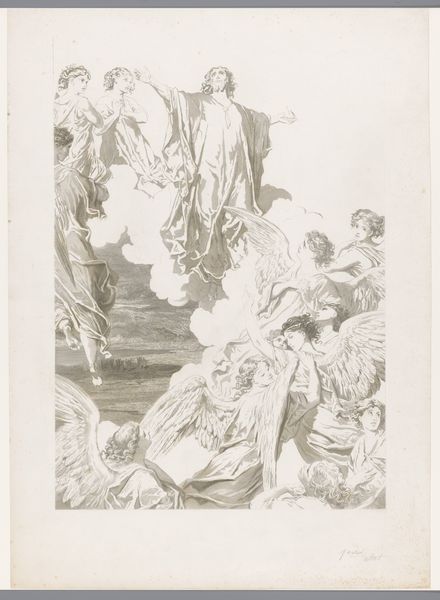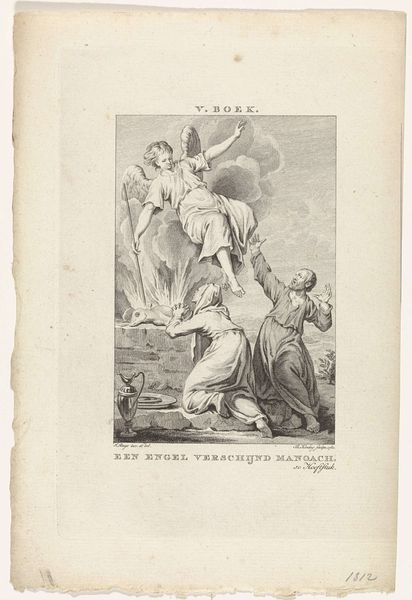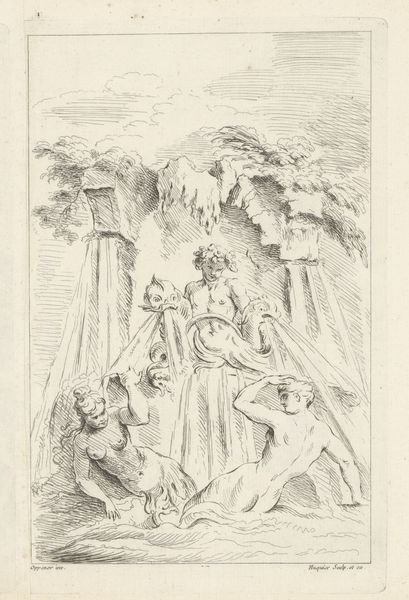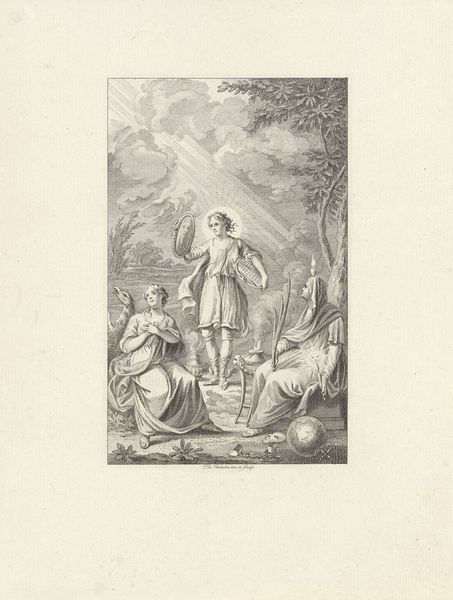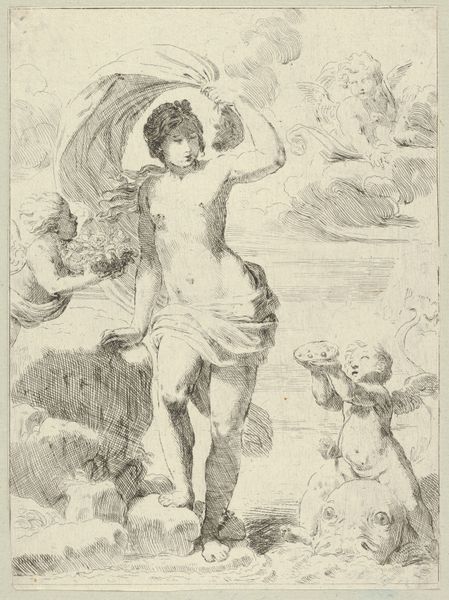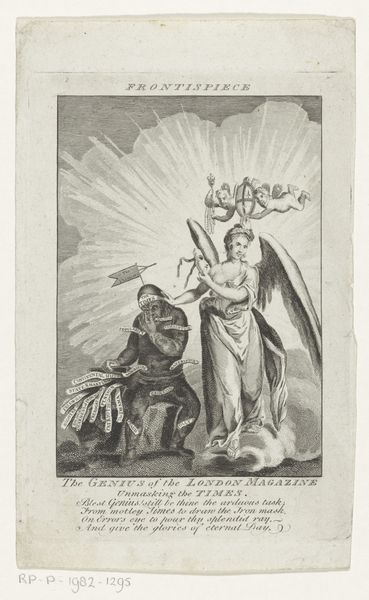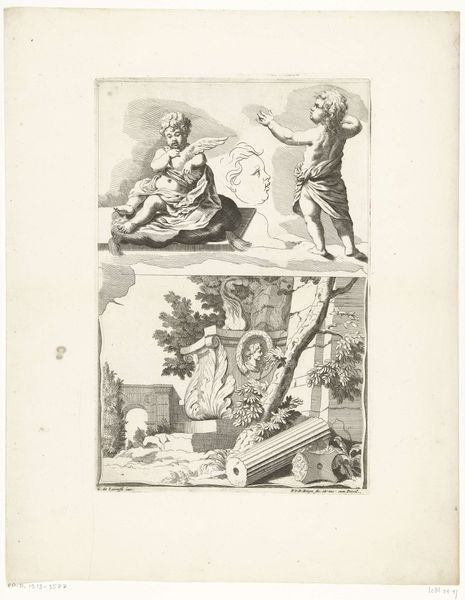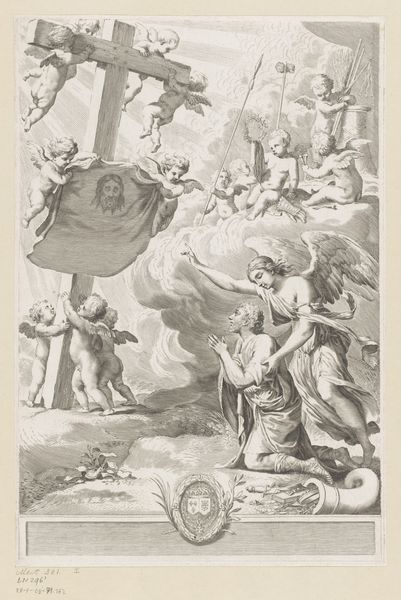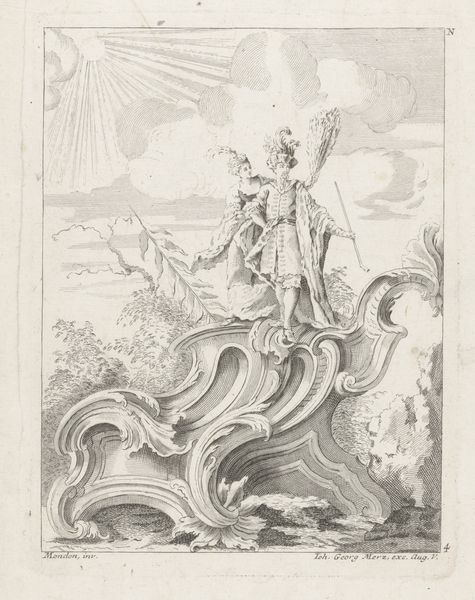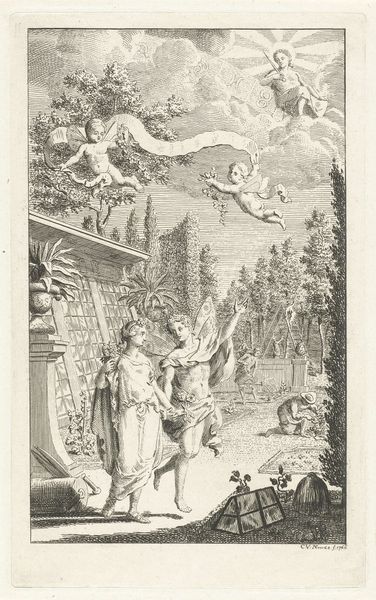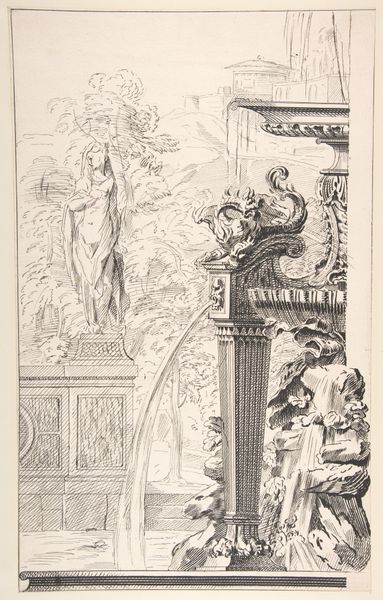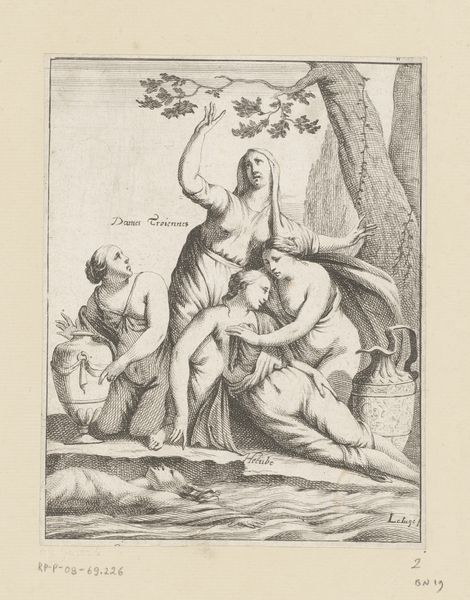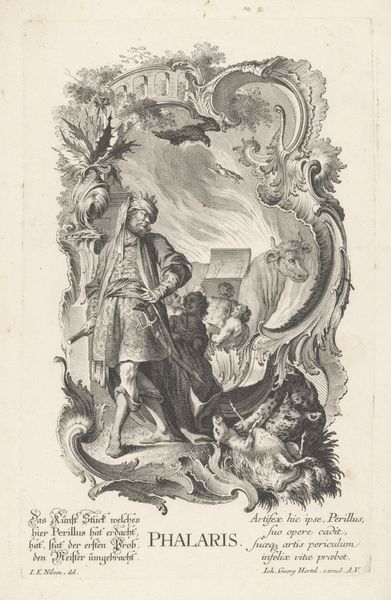
drawing, paper, ink, pen
#
drawing
#
narrative-art
#
caricature
#
paper
#
ink
#
pen
#
genre-painting
#
modernism
Dimensions: height 275 mm, width 215 mm
Copyright: Rijks Museum: Open Domain
Curator: Look at this drawing, a political cartoon titled "Spotprent met de Waarheid in de Tweede Kamer, 1866," or "Caricature with the Truth in the Second Chamber, 1866." It's by Johan Michael Schmidt Crans, executed with pen and ink on paper. Editor: My first thought is of stark contrast. You've got this almost classical figure looming over a chaotic scene – a parliament, maybe? The visual imbalance really sets the tone. Curator: Exactly. Think about the physical creation of this piece. It was reproduced for a wide audience, likely in a newspaper. Consider the labour involved in the original drawing, the transfer to a printing plate. This was about mass communication. Editor: And what is it communicating? The central figure, "Truth," is holding up a mirror. The reflection shows the members of parliament in disarray, implying a lack of integrity or perhaps accountability. Curator: The mirror itself is a powerful symbol, it implies reflection and self-awareness, and the clouds on which the female figure appears suggests perhaps an idealized version of the Truth rather than the reality. Note that this use of allegory isn't entirely modern even though the cartoon is filed under the "modernism" style tag. Editor: You’re right, it taps into very old visual language. Even her partially nude depiction is symbolic, she cannot be seen without artifice, it serves to show Truth in its raw, untainted form. But the contrast with those earth-bound, squabbling politicians. What commentary is the artist trying to convey? Curator: Perhaps a critique of political discourse, implying that the parliamentarians are more interested in personal gain than the pursuit of Truth and Justice. We can see from the Dutch inscription at the bottom: "Het woord! Niet te veel woorden, mijne heeren…liever daden!" suggesting words have exceeded useful action. Editor: It makes you consider the enduring power of symbols, how certain images recur across history to represent the same concepts. And also makes one think of what "Truth" represents to the viewer, how objective of a standard can it possibly be in 1866? Curator: Exactly! From my point of view, what truly matters, and this artwork encapsulates it beautifully, is the physical process of disseminating these potent visual and symbolic messages to a broader populace. Editor: Indeed. It's interesting to observe how artists can employ recurring visual ideas, while maintaining their unique commentary in any time.
Comments
No comments
Be the first to comment and join the conversation on the ultimate creative platform.
